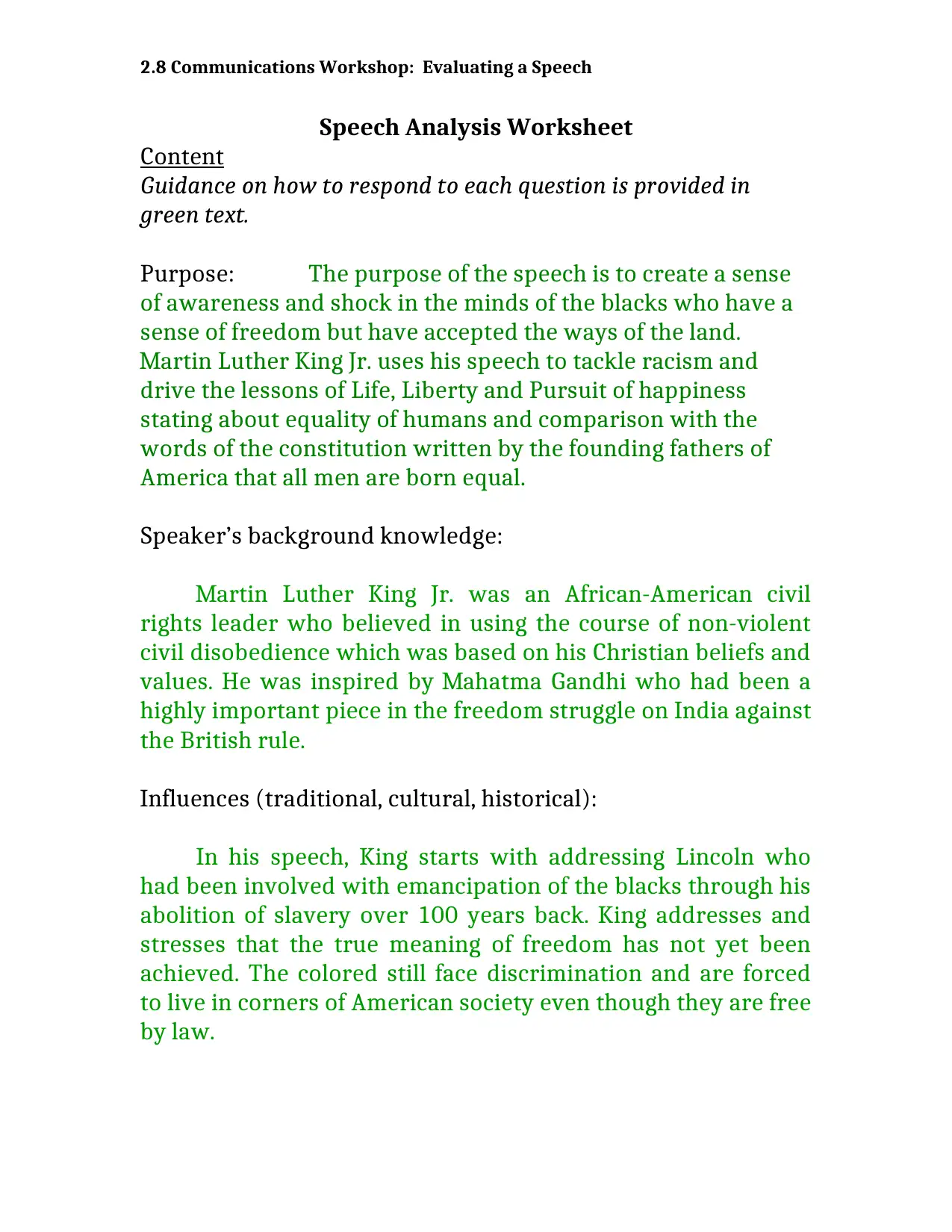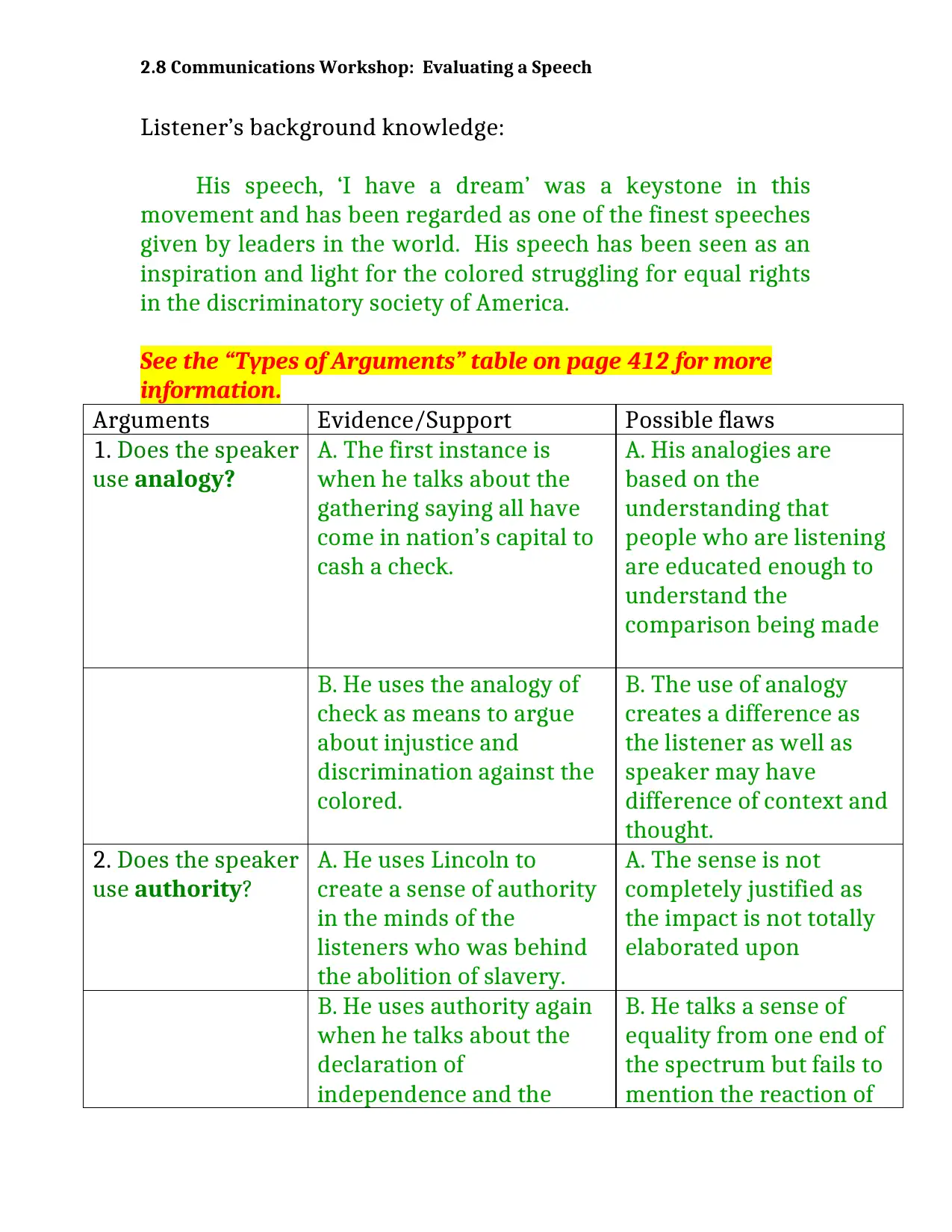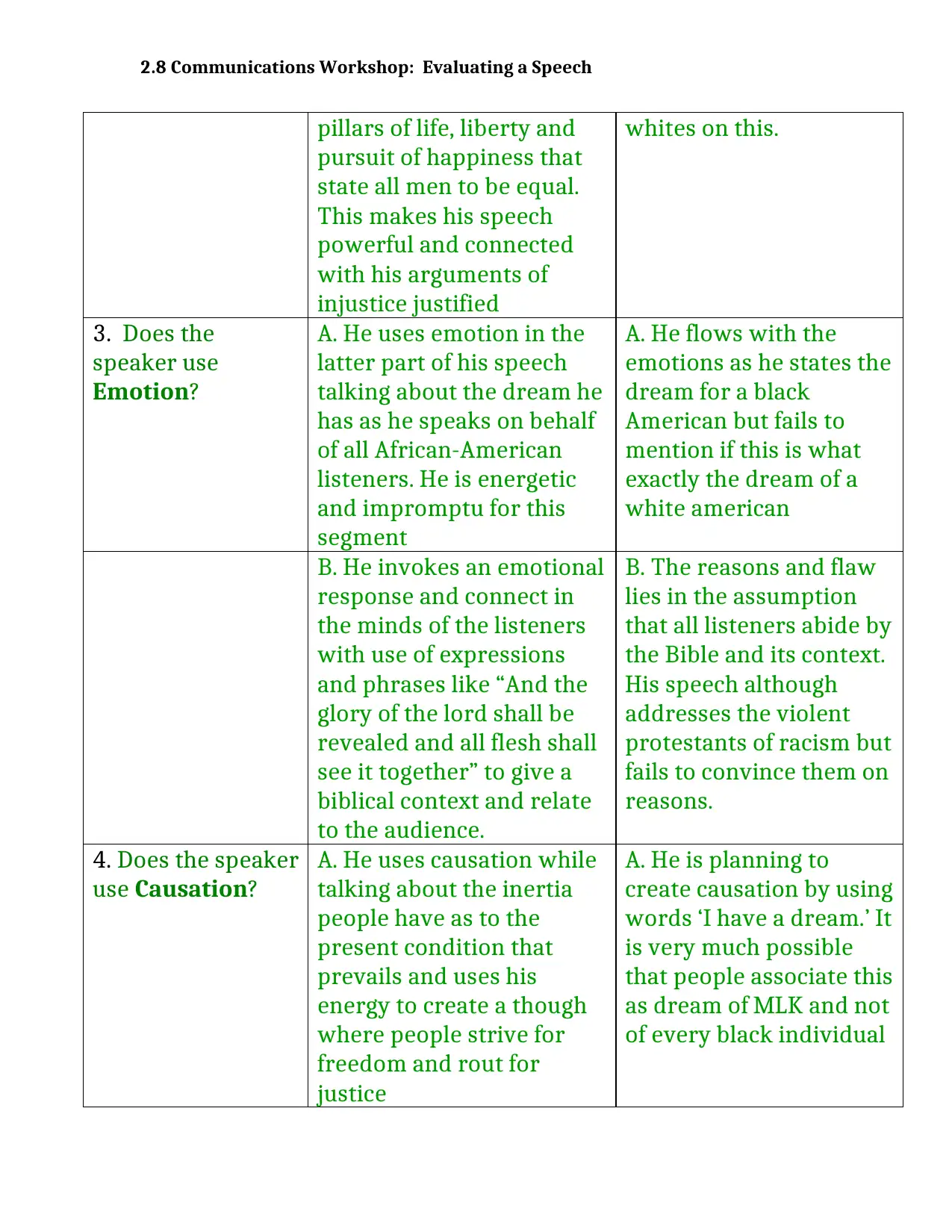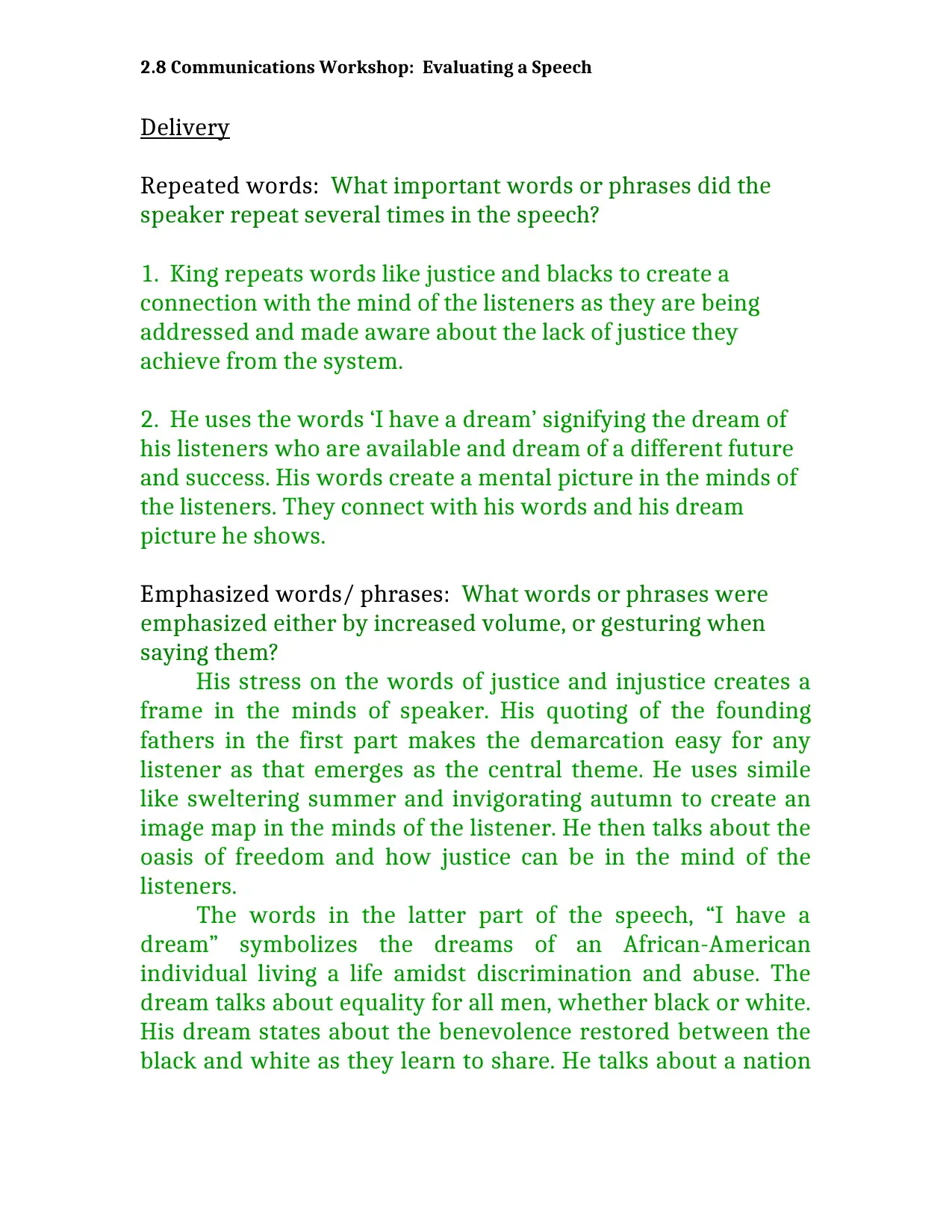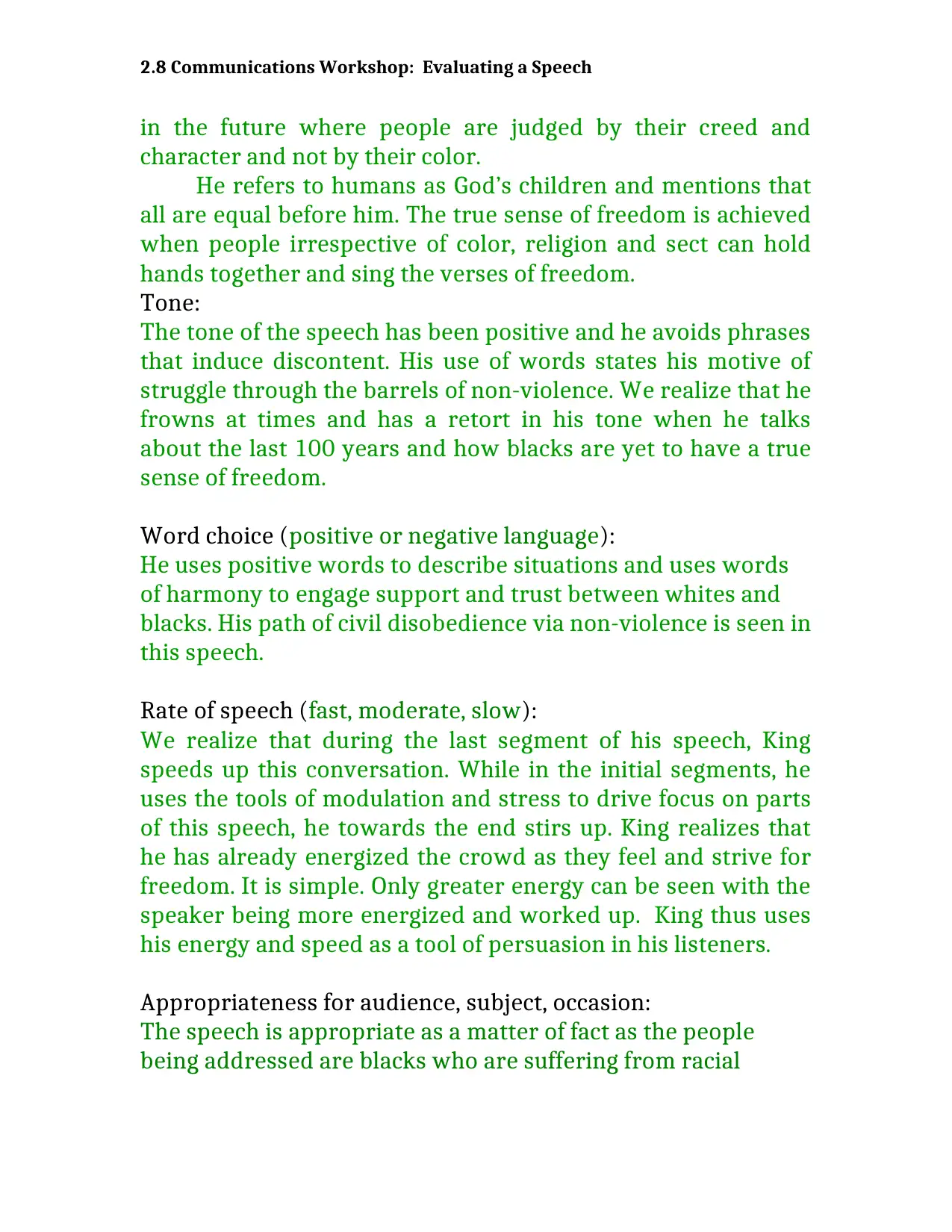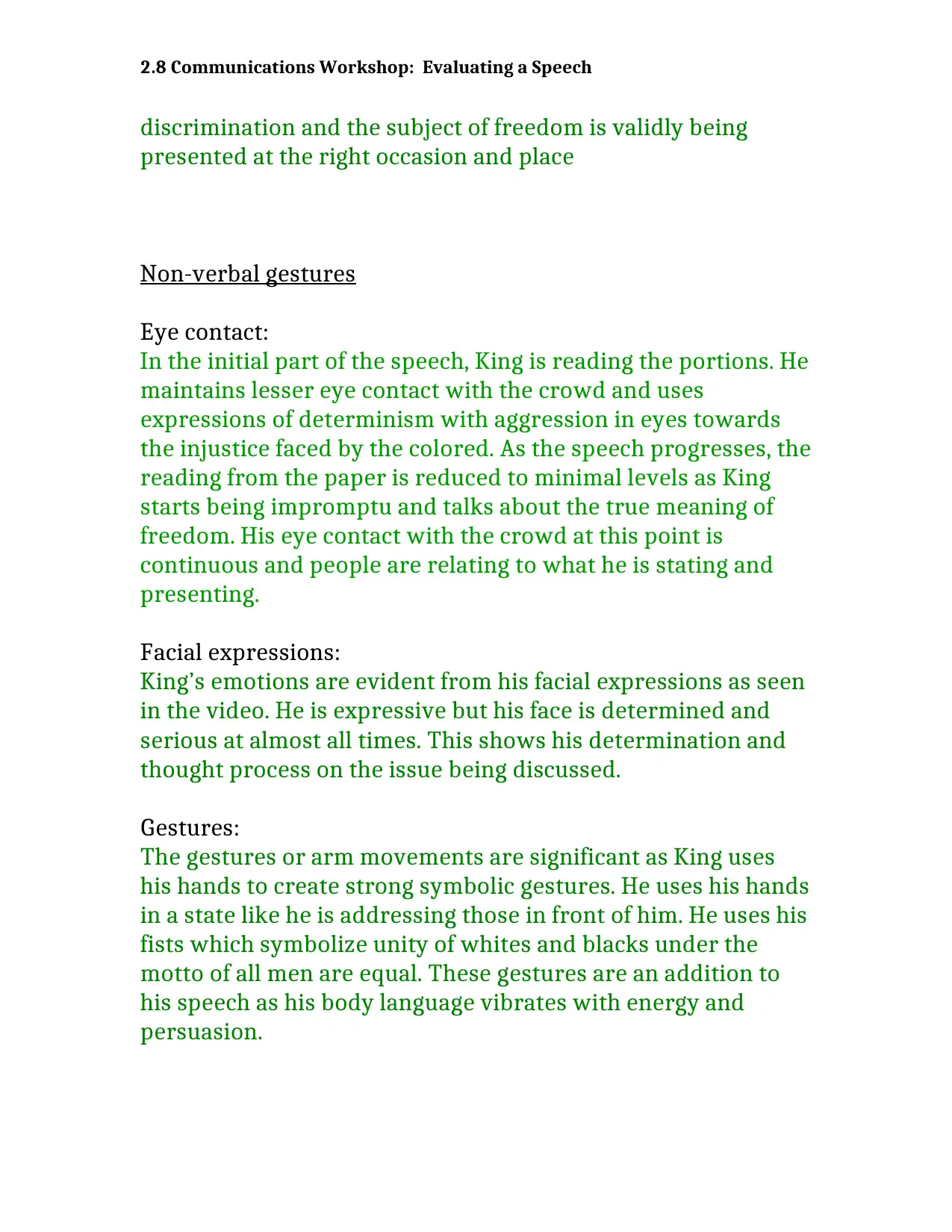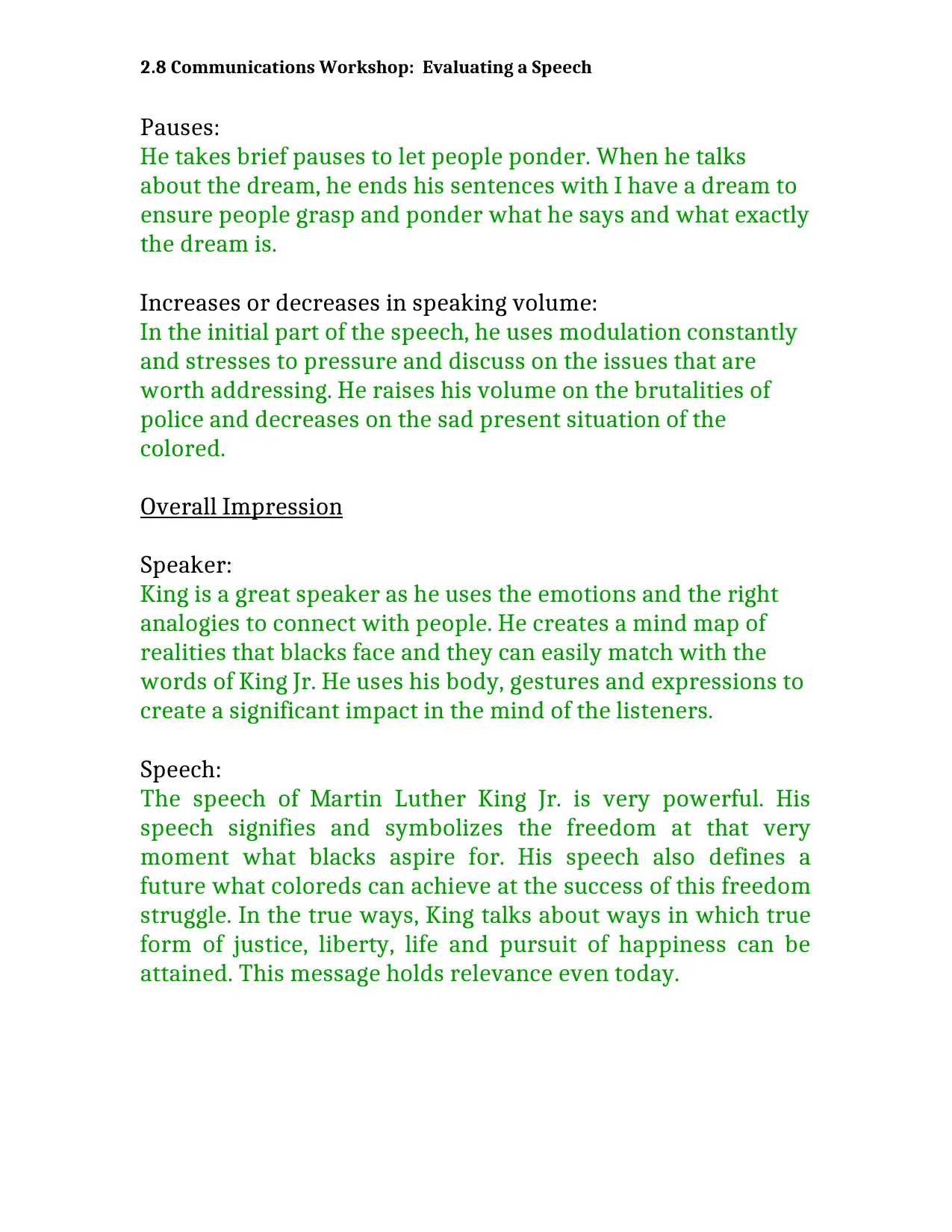The speech by Martin Luther King Jr. is a powerful call to action for racial equality and freedom. He uses repetition of words like 'justice' and 'blacks' to create a connection with his audience, and phrases like 'I have a dream' to symbolize the dreams of African-Americans living amidst discrimination. The tone of the speech is positive, using words of harmony to engage support and trust between whites and blacks. King's use of non-verbal gestures, such as eye contact, facial expressions, and body language, adds to his persuasive power. He also employs pauses, increases in speaking volume, and modulates his tone to convey emotion and emphasize key points. Overall, the speech is a masterpiece of public speaking, effectively conveying the message of racial equality and freedom.
![[object Object]](/_next/static/media/star-bottom.7253800d.svg)
![[object Object]](/_next/static/media/star-bottom.7253800d.svg)
